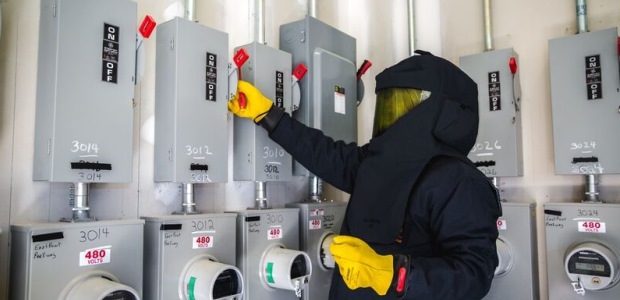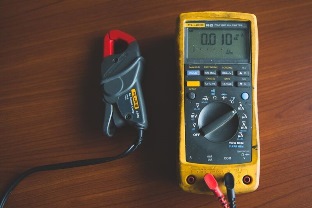
How to Have a Robust Electrical Worker Program: Four Important Questions Answered
One of the questions that often arises concerns who is able to qualify an electrical employee. You will not find this answer in any electrical regulation, nor is it found in NFPA70E, the NESC, or other guidelines.
- By Ken Sellars
- Sep 17, 2018
A person in any field is considered qualified when a certain accomplishment has been met and this accomplishment is backed up with some sort of documentation. This concept has been active for many years in the military, for instance, where qualifying on a duty station requires the individual to be trained, either via classroom or on-the-job training (or both), and then by demonstration of skills necessary to prove competence. When each task is successfully demonstrated, the qualifying agent signs the task line, and when all tasks are signed off, the crew has a newly-qualified team member. This process is always backed up by proof of demonstration, usually involving a qualification card. The process also helps to ensure military readiness of personnel. The qualification cards often become keepsakes, even after many years of completion of military service.
You have no doubt read articles or had workplace discussions regarding Qualified Electrical Workers (also known as QEP: Qualified Electrical Person), QEWP (Qualified Electrical Worker Program), or similar descriptors. We first should understand how a qualified worker is defined.
How is 'Qualified Worker' Defined?
NFPA 70E Article 100 defines the term "Qualified Worker" as "One who has demonstrated skills and knowledge related to the construction and operation of electrical equipment and installations and has received safety training to identify the hazards and reduce the associated risks" (NFPA 70E - 2018, page 70e-12).
OSHA has a similar definition in 1910.399 as "One who has received training in and has demonstrated skills and knowledge in the construction and operation of electric equipment and installations and the hazards involved."
In Subpart S, OSHA 1910.331(a) imparts:
The provisions of 1910.331 through 1910.335 cover electrical safety-related work practices for both qualified persons (those who have training in avoiding the electrical hazards of working on or near exposed energized parts) and unqualified persons (those with little or no such training) working on, near, or with the following installations...
OSHA 1926.32(m) contains this definition:
Qualified employee (qualified person): One knowledgeable in the construction and operation of the electric power generation, transmission, and distribution equipment involved, along with the associated hazards.
Note 1: An employee must have the training required by 1910.269 in order to be considered a qualified employee.
Note 2: Except as provided in 1910.260, an employee who is undergoing on-the-job training and who, in the course of such training, has demonstrated an ability to perform duties safely at his or her level of training and who is under the direct supervision of a qualified person is considered to be a qualified person for the performance of those duties.
Finally, this is what OSHA 1910.269(a)(2)(ii) has to say:
Each qualified employee shall also be trained and competent in:
1. The skills and techniques necessary to distinguish exposed live parts from other parts of electric equipment,
2. The skills and techniques necessary to determine the nominal voltage of exposed live parts,
3. The minimum approach distances specified in this section corresponding to the voltages to which the qualified employee will be exposed and the skills and techniques necessary to maintain those distances,
4. The proper use of the special precautionary techniques, personal protective equipment, insulating and shielding materials, and insulated tools for working on or near exposed energized parts of electric equipment, and
5. The recognition of electrical hazards to which the employee may be exposed and the skills and techniques necessary to control or avoid these hazards.
Note to paragraph (a)(2)(ii): For the purposes of this section, a person must have the training required by paragraph (a)(2)(ii) of this section to be considered a qualified person.
Who Can Qualify an Electrical Worker?
One of the questions that often arises concerns who is able to qualify an electrical employee. You will not find this answer in any electrical regulation, nor is it found in NFPA70E, the NESC, or other guidelines. By default, this responsibility falls on the employer for any task, be it a fork truck operator, a painter, or an electrical worker. The employer is, by this default concept, the "qualifying agent." In this role, the employer must understand two crucial points:
- OSHA requires that workers in the electrical field be qualified.
- The employer must provide a method of qualification, including documentation.
Similarly, if a state, county, or municipality employs someone who is required to be a Qualified Electrical Worker (QEW,) that governmental body would also have to provide a method of qualification and documentation.
Does Holding a Current Electrical License Qualify a Worker?
 Some employers believe that an electrical license or a professional engineering license meets the requirements of qualification. This is not true, however, from an OSHA standpoint. A licensed electrician or a licensed PE, no matter if he or she holds one or multiple state licenses, could start work tomorrow at your company, but that person would NOT be a QEW at your facility until your company puts the new hire through a qualification process (usually included in your written Electrical Safety Program). Until then, you have a licensed, unqualified electrical worker.
Some employers believe that an electrical license or a professional engineering license meets the requirements of qualification. This is not true, however, from an OSHA standpoint. A licensed electrician or a licensed PE, no matter if he or she holds one or multiple state licenses, could start work tomorrow at your company, but that person would NOT be a QEW at your facility until your company puts the new hire through a qualification process (usually included in your written Electrical Safety Program). Until then, you have a licensed, unqualified electrical worker.
How Do I as the Employer Qualify My Employees?
In light of the previous points, what should an electrical qualification process look like? What tasks should an electrician, engineer, HVAC technician, or instrument technician be required to prove qualification on? Below are some typical areas to include in your qualification process (keep in mind this list is not inclusive):
1. Multimeter usage: Any employee whose normal job tasks include use of an electrical meter or similar measuring equipment must demonstrate the appropriate and safe usage of the specific meter(s) being used. This demonstration must include hands-on demonstration of specific items, including the following:
a. pre-use meter inspection,
b. how to select the appropriate meter settings, and
c. how to perform required measurements safely and proficiently.
A company can often get meter training from the meter manufacturer.
2. PPE Selection: Qualified electrical employees should be able to demonstrate how to select and appropriately don required electrical safety PPE and to decide the following:
a. when to wear voltage-rated gloves,
b. when arc-rated PPE is required,
c. what level of arc-rated PPE is required,
d. when a voltage-rated hard hat is required, and
e. other similar decisions.
3. Interpreting Arc Flash Labels: A qualified electrical worker should be able to read and interpret an arc flash label or the results from an arc flash study. Skills to demonstrate:
a. proof of understanding,
b. determination of required PPE from the label or study,
c. where to find system voltage on the label, and
d. what the working distance on a label or arc flash study means to the individual.
4. Electrical Switch or Circuit Breaker Operation: The QEW should know the mechanical working of a switch or breaker and how to properly operate the device, including how to react if the switch or breaker fails. Some skills to demonstrate:
a. where to stand,
b. what PPE to wear,
c. methods to reduce risks involved in breaker/switch operation,
d. the importance of holding one's breath, and
e. how powerful an arc flash event could be upon device failure.
5. Verification of Zero Energy State: Electrical personnel should understand how to properly verify an electrical circuit is deenergized and safe to work on. This process should involve the following actions:
a. visual verification of the disconnect being open if possible,
b. proper setup of boundaries for shock and arc flash protection of unqualified personnel,
c. correct decision of required PPE,
d. before-and-after multimeter verification, and
e. verification that all terminals within the circuit are at zero energy state, both phase to phase and phase to ground.
You will probably want to include other areas of qualification; these areas should be identified and followed up with the development of appropriate qualification steps. Once the skills are demonstrated, they should be suitably documented. This documentation should be kept in the employee’s file.
The Major Takeaways
In summary, the employer is responsible for qualifying employees on any tasks that the employer expects those workers to perform. The tasks must be executed in a safe manner per OSHA regulations and NFPA 70e guidelines. Looking at the electrical program in this manner, we see the bottom line as follows:
- OSHA requires certain electrical tasks to be performed by qualified personnel.
- The employer is responsible for creating a method (process) to qualify workers for electrical tasks, regardless of the individual's licensure or prior experience. The qualification process must include demonstration of skills.
- The employer must document each step in a worker's qualification.
- OSHA requires workers to be trained on the electrical hazards and the mitigation of those hazards.
- Employers must provide employee training on the electrical hazards and mitigation of hazards.
The responsibility of providing a safe work environment will always rest on the employer's shoulders. By taking necessary steps to qualify the electrical employees, the employer can have a robust QEWP and meet the ultimate safety goal: to see all electrical employees go home each day without having suffered shock, arc flash, or other electrical-related injuries.